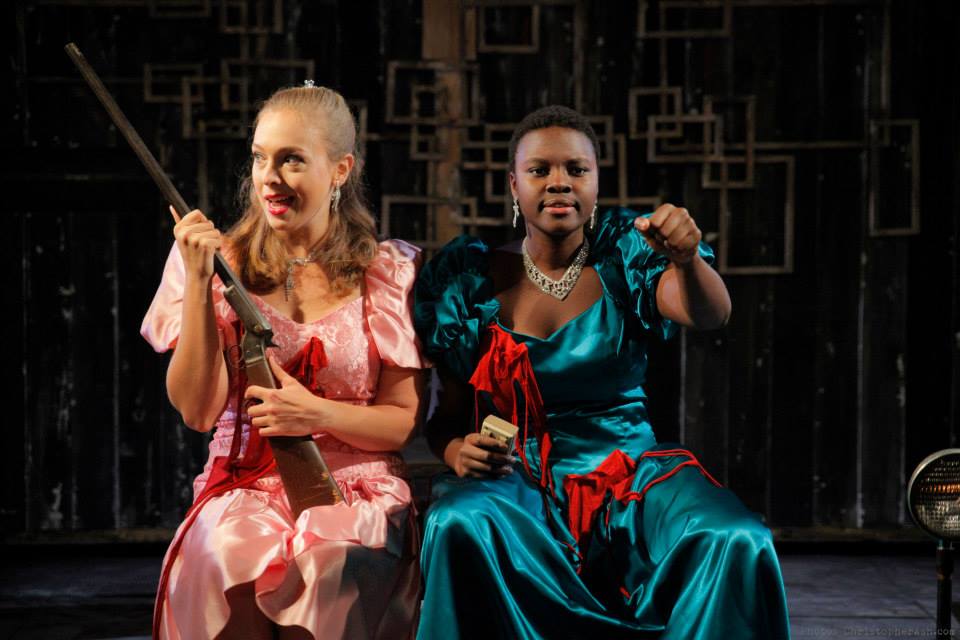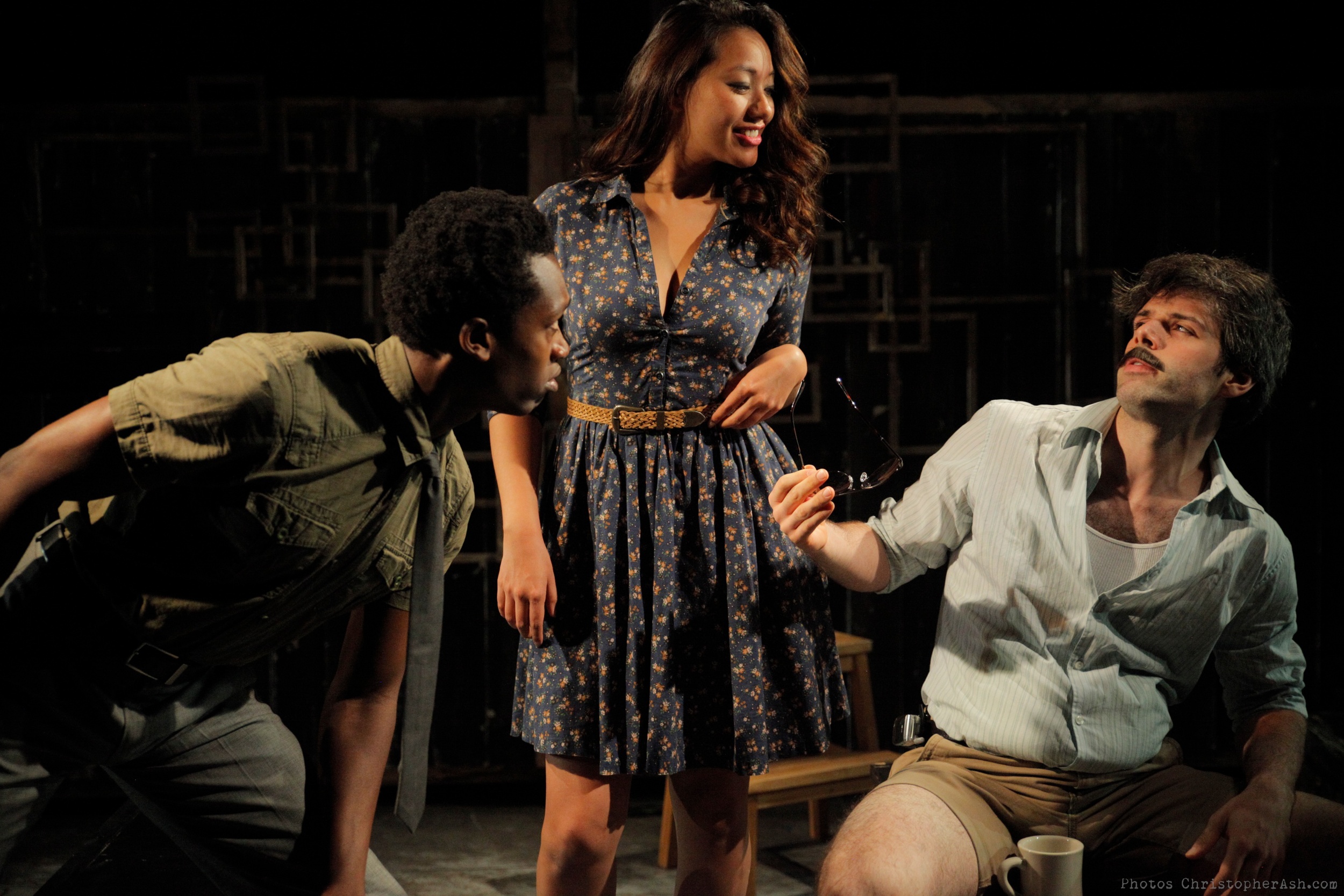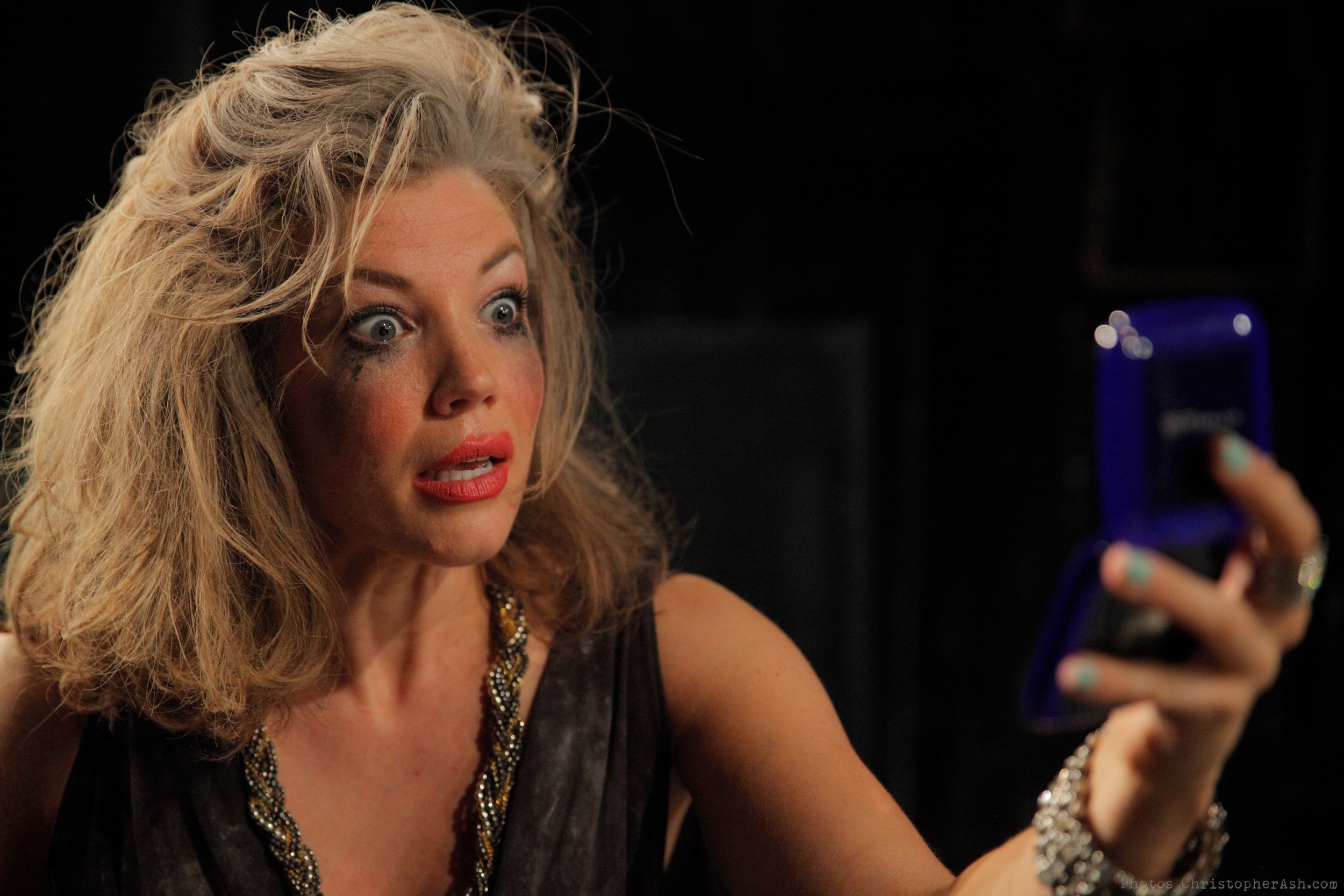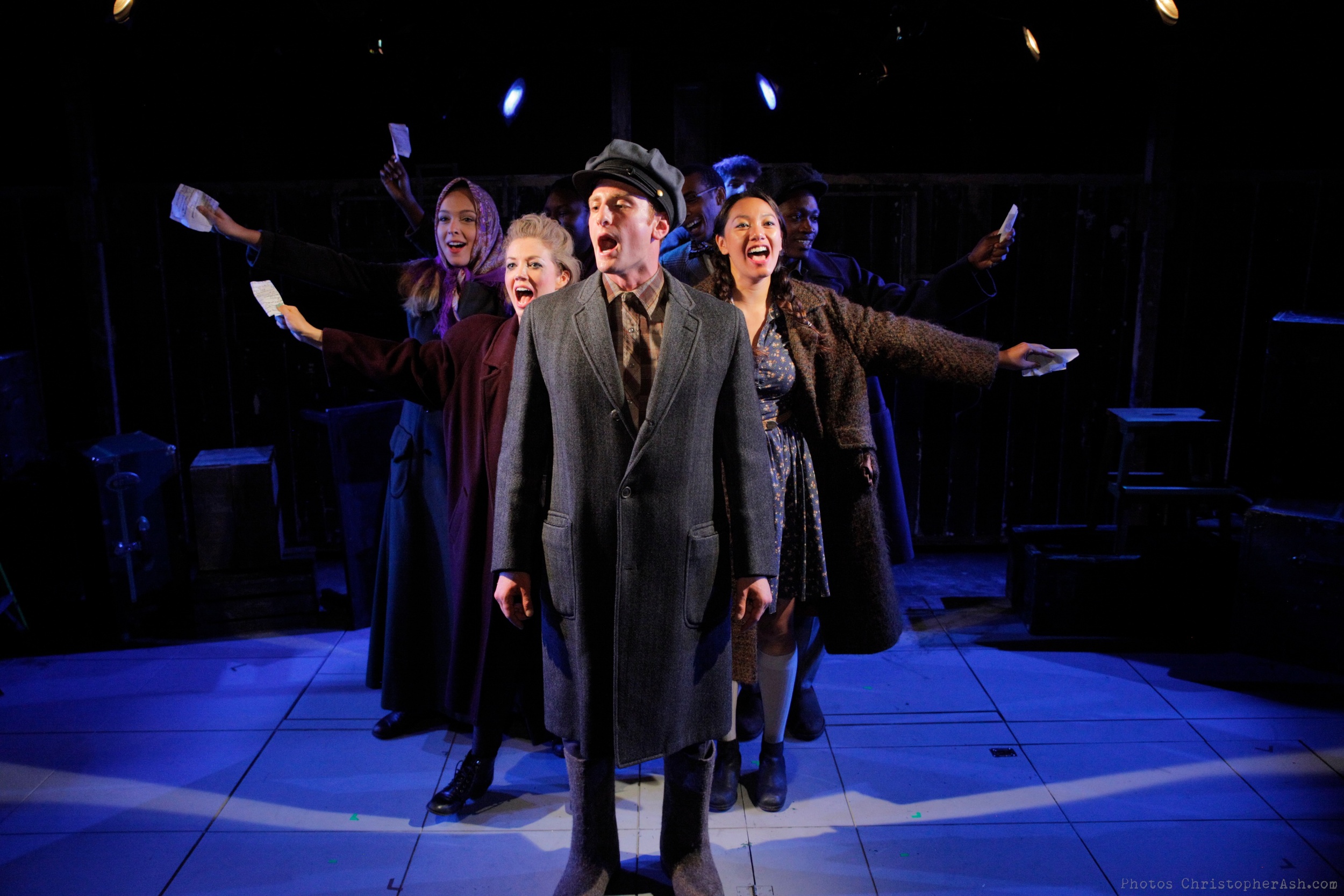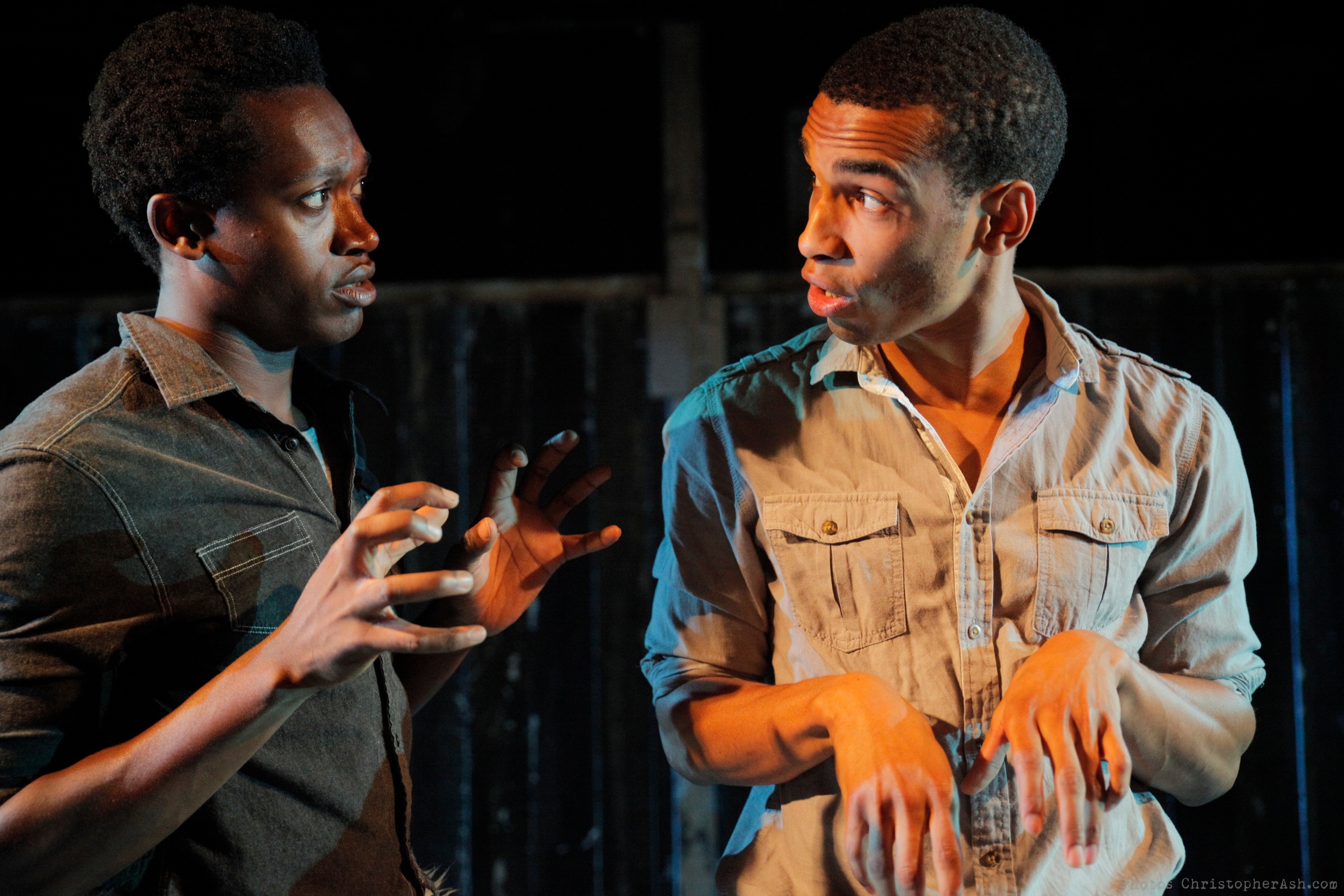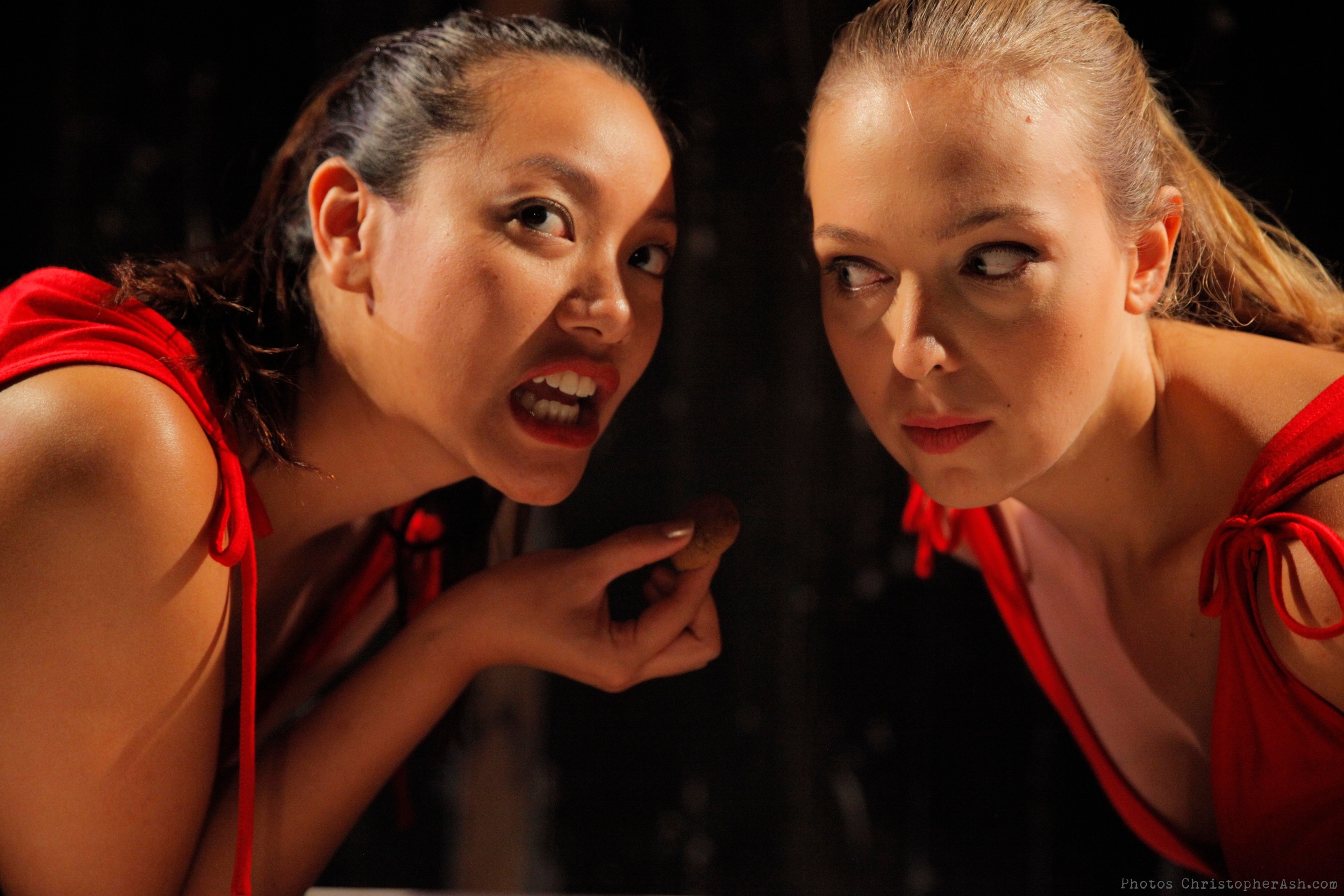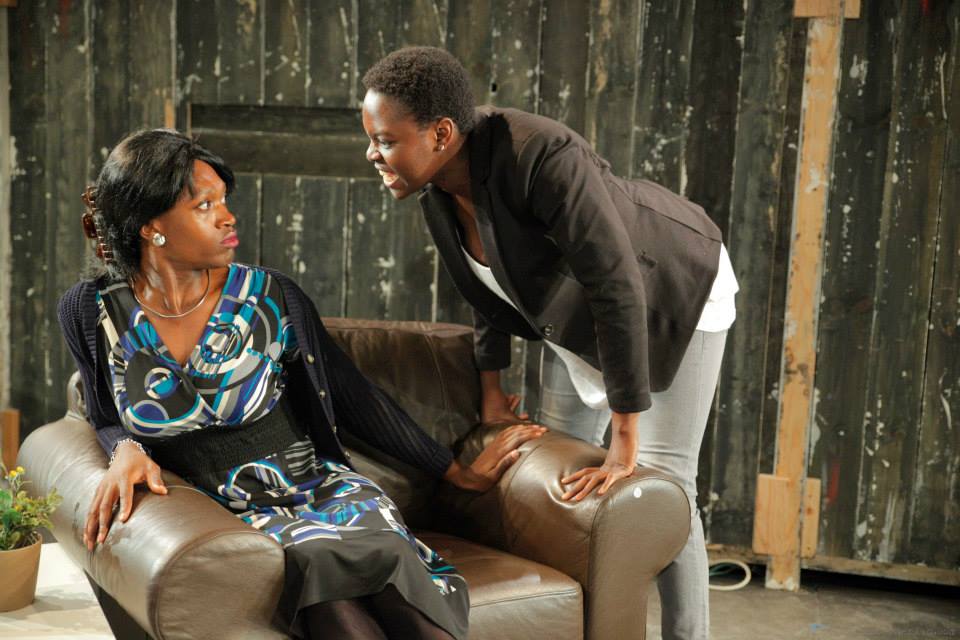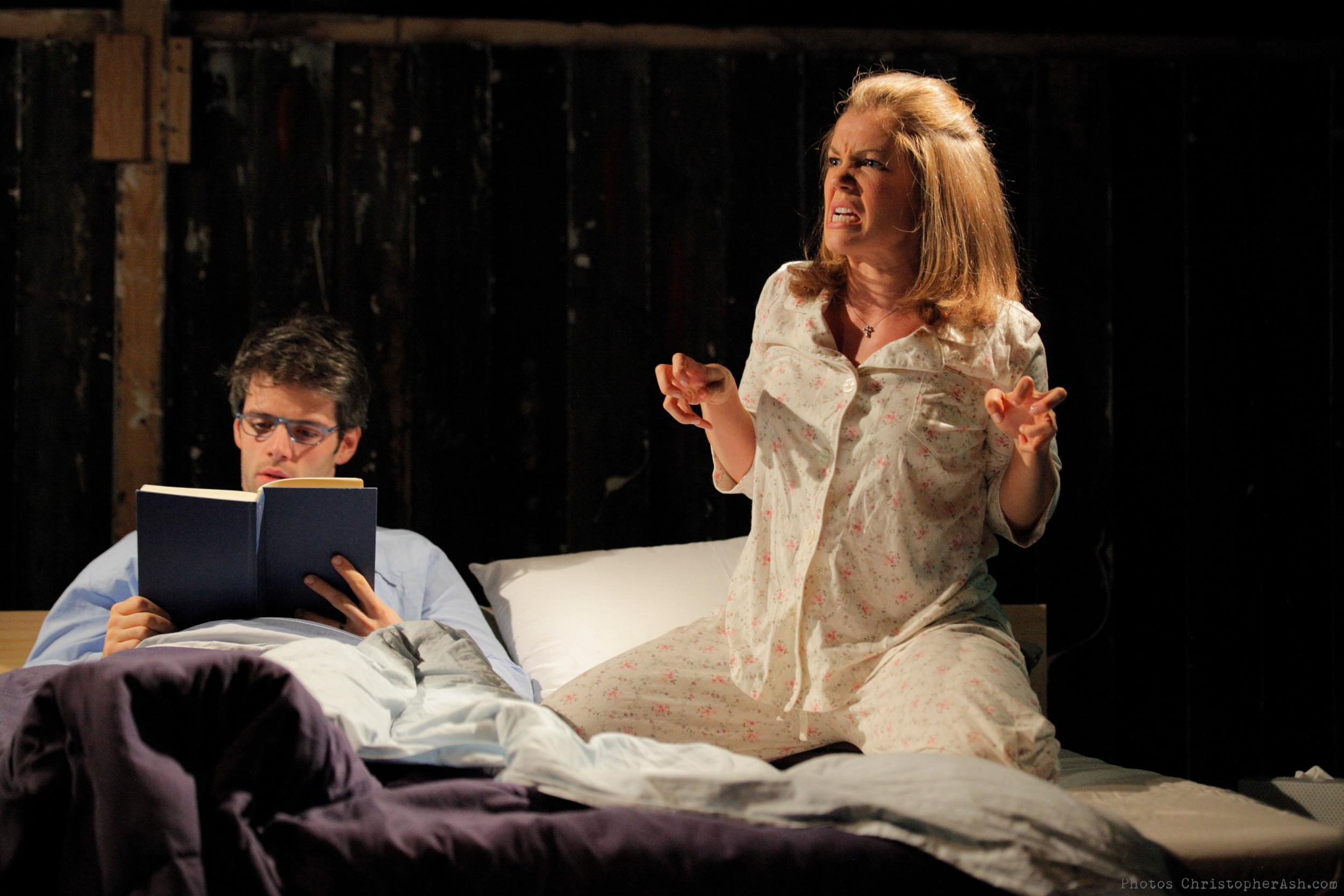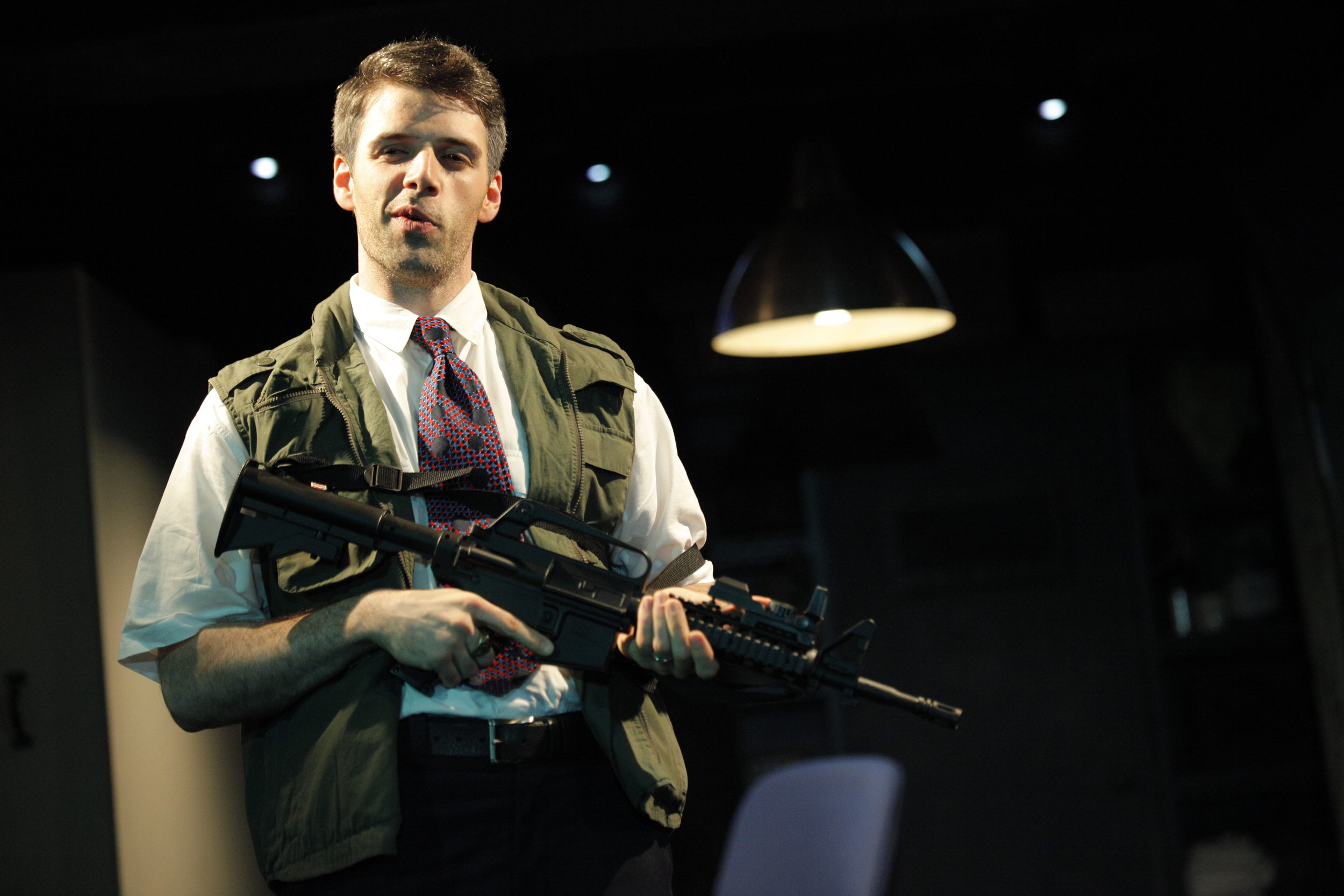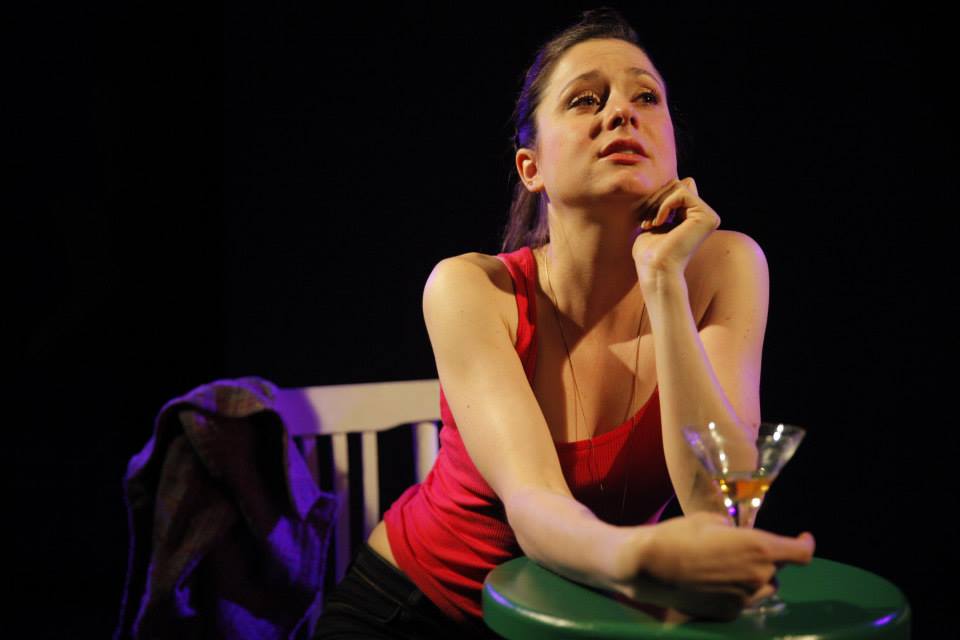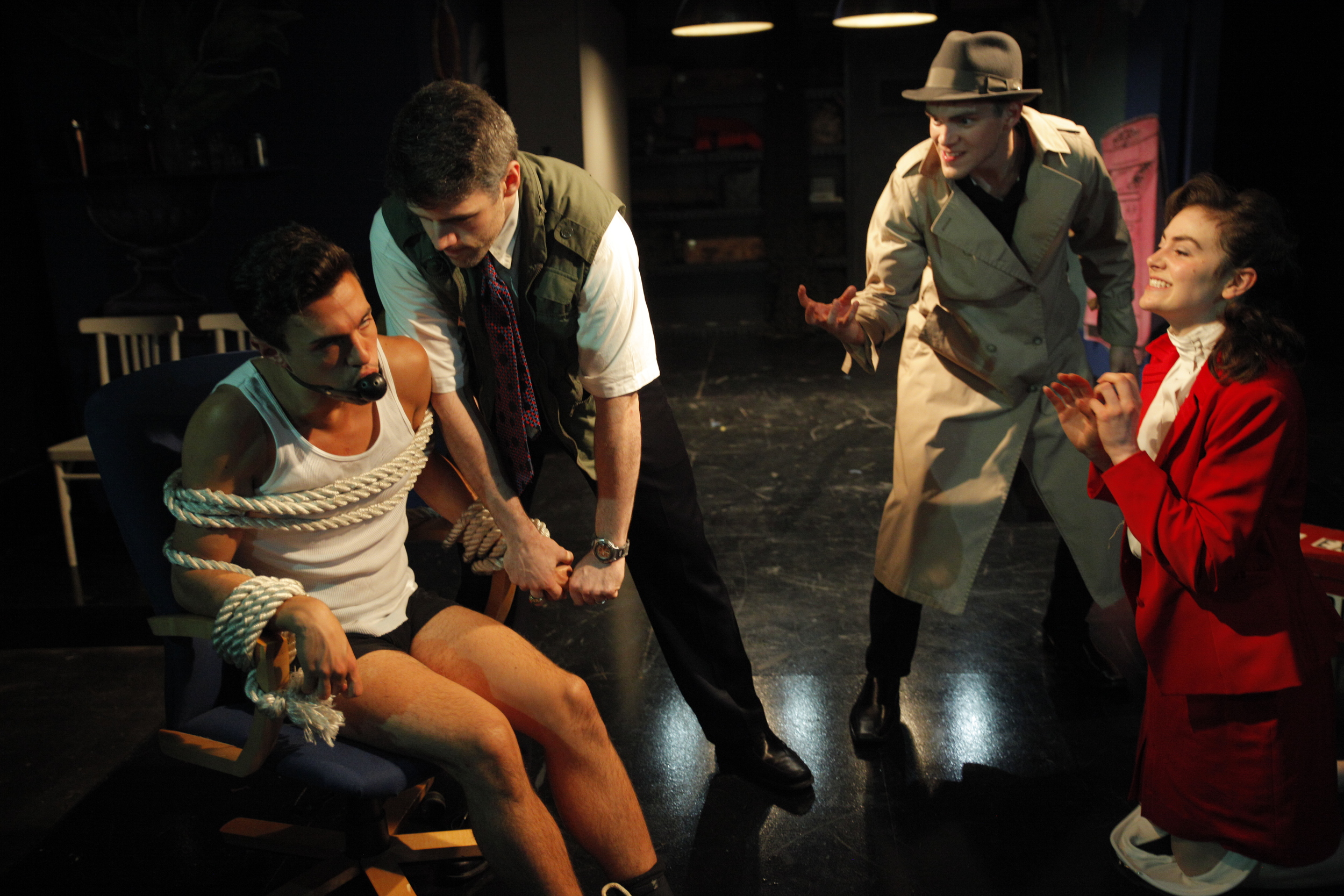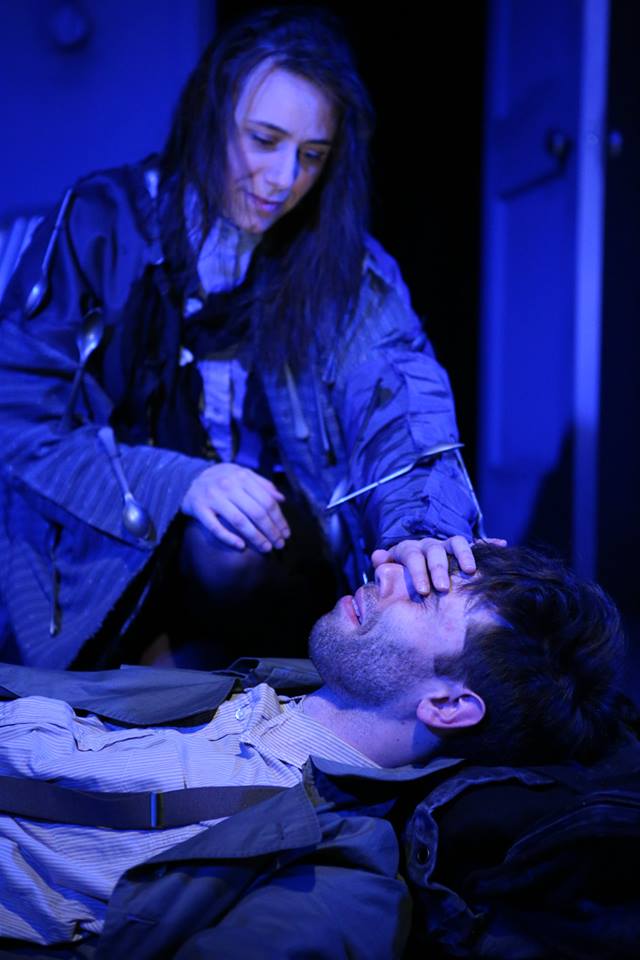Review of the Yale School of Drama’s The Seagull
Anton Chekhov’s The Seagull is a very busy play, a fact that the current production from the Yale School of Drama, directed by third-year director Jessica Holt, fully embraces. Begin with that very busy set (Jean Kim) running the entire length of the Iseman Theater’s space and including a balcony perch for the musicians who accompany the action with songs. There are chairs, tables, divans, garden seats, trees, paintings, musical instruments, a wooden cut-out of a half-moon, a huge painting of a lake on a curtain, various bric-a-brac, and, at both stage left and right, make-up tables with lighted mirrors—and don’t forget the swing built for two. The Seagull features theater as a theme because two of its main characters, Irina Nikolayevna Arkadina (Maura Hooper) and her son Konstantin Gavrilovich Treplev (Christopher Geary), are involved in theater—she as a respected actress, he as a fledgling (when the show begins) playwright. Holt’s production makes theatricality not only a theme but a modus operandi, finding, more than many productions do, in its sense of theater the comic excess of the play.
Granted, Chekhov called his play a comedy, but that fact seems to elude the general approach to The Seagull, as there are few jokes per se and Chekhov isn’t one to stage-direct farce and slapstick. Holt and company find the comedy by playing many of the interactions broadly and by minimizing the pathos—until, in the final of four acts, it seemingly can’t be helped. Even then, the use of a surprising exit underscores not only the staging, but the staginess of floundering actress Nina (Chasten Harmon)’s bid for profundity. In other words, this version of The Seagull keeps its eye on what makes all these characters laughable to us, but so unamusing to themselves, most of the time.
Consider some of the great casting choices: with Maura Hooper as Irina, there’s no way this production isn’t going to register fully, for our enjoyment, the staginess and vanity of a “great actress,” mouldering away at her brother’s country estate and trying—more deliberately than desperately—to maintain the erotic ardor of her lover while also trying—more casually than carefully—to be a mother to her earnest young son. Hooper has great comic gifts and her Irina, fully convinced that it’s all her show, doesn’t need to “steal” what she so clearly dominates, even without a sexual tryst on a tabletop. As her self-involved lover, the successful (careerist) writer Trigorin, Aaron Bartz sports an impressive wavy forelock and a dapper appearance. He’s quite the coxcomb and, at 55, is still able to have his head turned by Nina’s eager neediness. She so very clearly wants a man of substance like Trigorin and not a headstrong mama’s boy like Konstantin.
As the play’s hero, Geary has a voice that can ignite wood and chop ice. He can be Irina’s pathetic plaything one moment and upbraid her with his deep dissatisfactions the next. He begins earnestly artistic, rebellious against his mother’s generation, and ends surfeited with success but still hungry for what he pined for in youth. He’s a very Russian character, and Geary in particular and the show in general can turn on a dime from slapstick to existential bathos. That skill is nowhere more necessary than in the depiction of Nina, who in Harmon’s rendering goes from radiant, girlish vitality, to worn and disillusioned but also more profound. Her final scene with Konstantin is almost tragic because of their inability to find a shared note to end on. This, we might feel, could also be comic, but Holt’s Seagull takes Nina’s suffering seriously, and Harmon makes us believe in her, at least as much as Konstantin does.
In the end this Seagull is moving—but from the start it moves (the show boasts one of the quicker-seeming first acts I’ve seen at a School of Drama production), and for that to happen you need a lot of capable support to let us in on the lives of the other characters (seven speaking roles) without letting the play get bogged down. It helps to have the likes of Niall Powderly and Shaunette Renée Wilson as the couple Ilya and Paulina Shamrayev, who swell scenes and provide important reactions and, in llya’s case, oddly obsessive tensions. And Paulina provides as well a sullen dalliance for Yevgeny Sergeyevich Dorn (Yahya Abdul-Mateen II), a country doctor who abounds in feminine interest, and comes across as a likeable observer. In the key role of Masha, the Shamrayev’s airy daughter, Zenzi Williams prisses and preens and shares a charming drinking scene with Trigorin; suffering from Konstantin’s indifference, she marries the earnest school teacher Medvedenko (Andrew Burnap, who also provides some very effective accompaniment on the trumpet), who appears here to have more sense and self-respect than most of these gum-flapping eccentrics. Not least of which is the estate’s owner Pyotr Nikolayevich Sorin (Jonathan Majors), played as a fond, retiring, frail character who, like so many Chekhov characters, means well but achieves nothing. Add as well the servant Yakov (Luke Harlan, leading the other domestics—The Cook (Jennifer Schmidt) and The Maid (Pornchanok Kanchanabanca)—in musical interludes), who maintains the kind of unschooled, fierce intelligence that Russian writers like to ascribe to the serfs.
All in all, a game cast and a very physical, energetic, and enjoyable production. As generally happens in such large-scale plays, we do tend to miss the more engaging characters when they’re offstage, but at least Holt and company’s Seagull gives all the characters lots of room to move about in and lots of variety. Costumes (Asa Benally) run from Masha’s insistent black to Irina’s blazing red taffeta and her eye-popping red violet travel outfit, and include as well the requisite “simple peasant” gear and the traditional “Fiddler on the Roof” style that makes a caricature of Ilya, as well as handsome outfits that make us believe Paulina could turn the dandyish doctor’s head. Clothes make the man, and Konstantin’s final get-up reeks of self-importance, Hamlet-style. Elizabeth Mak’s lighting provides effects that alter time of day, inside/outside, and, in the final act especially, a claustrophobic change of mood, while Kate Marvin’s sound adds, among other things, the rain and a gunshot that will make you jump.
Long and involved The Seagull is, there’s no argument there. The School of Drama production throws as much energy, high spirits and variety at the classic text as one can imagine, finding the entertainment in all that existential ennui. Inspiring.
The Seagull By Anton Chekhov
Translated by Paul Schmidt
Directed by Jessica Holt
Scenic Designer: Jean Kim; Costume Designer: Asa Benally; Lighting Designer: Elizabeth Mak; Sound Designer: Kate Marvin; Production Dramaturg: Kelly Kerwin; Stage Manager: Kelly Montgomery
Yale School of Drama
December 12-18, 2014

